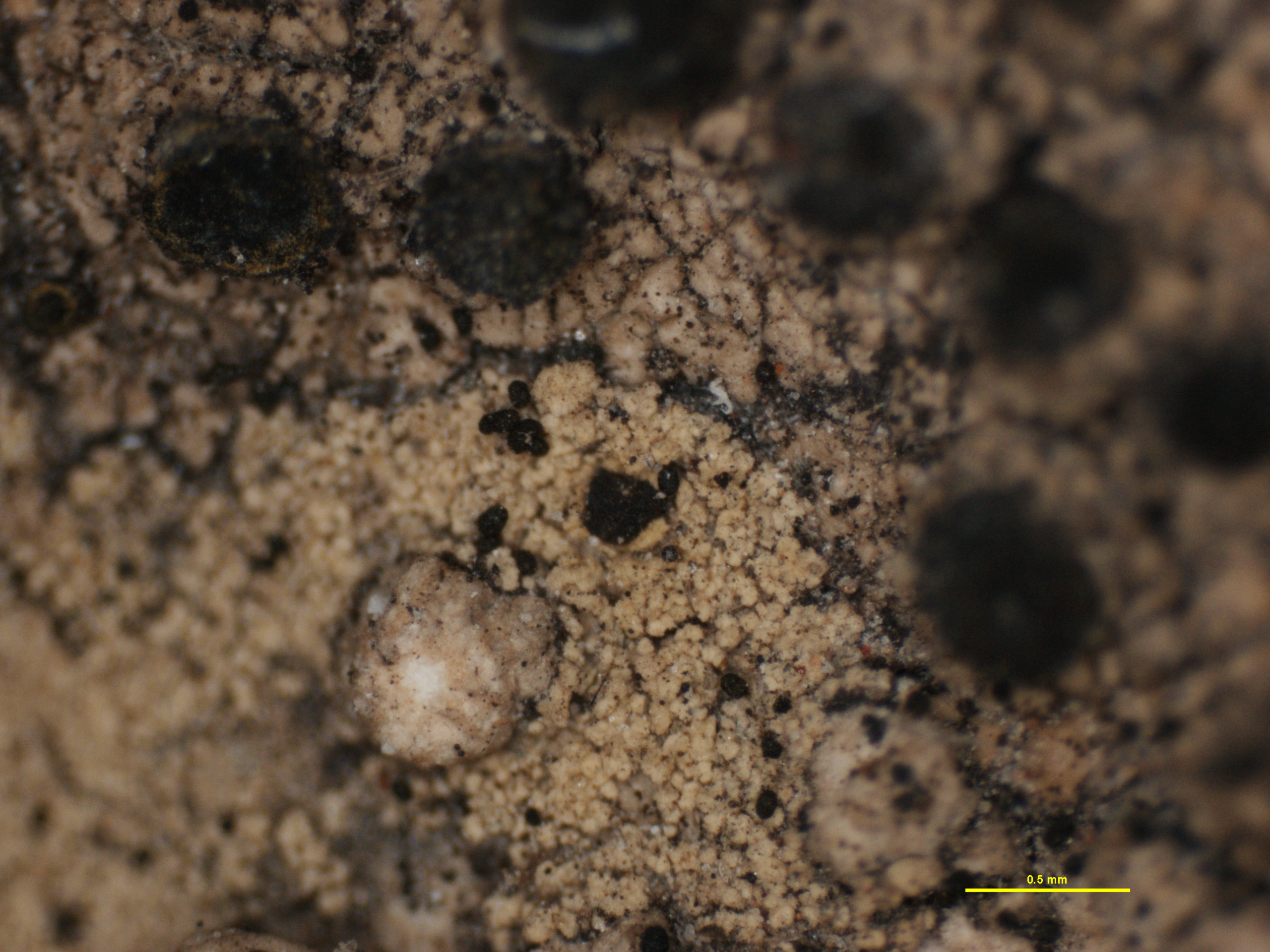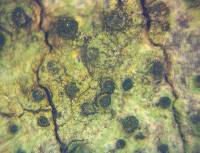
Consortium of Lichen Herbaria
- building a Global Consortium of Bryophytes and Lichens as keystones of cryptobiotic communities -
- Home
- Search
- Images
- Species Checklists
- US States: O-Z >
- US National Parks
- Central America
- South America
- US National Parks
- Southern Subpolar Region
|
|
|
|
Family: Caliciaceae
[Cyphelium chloroconium (Tuck.) Zahlbr.] |
Nash, T.H., Ryan, B.D., Gries, C., Bungartz, F., (eds.) 2004. Lichen Flora of the Greater Sonoran Desert Region. Vol 2. Thallus: verrucose or verrucose-areolate, moderately thick surface: gray cortex: 7-11 µm thick, forming a gelatinous layer of conglutinated, thin hyphae Apothecia: abundant, sessile or somewhat immersed, up to 0.5-0.8 mm in diam., short cylindrical to irregular, sometimes with a yellow pruina in young apothecia particularly along the inner edge of the exciple exciple: 50-70 µm thick laterally, thinner towards the edge, consisting of strongly sclerotized, interwoven hyphae, poorly delimited towards the substrate; hypothecium and exciple: merged at the base, 140-170 µm high hypothecium: strongly convex, medium brown, consisting of radiating, sclerotized hyphae asci: cylindrical, 39-42 x 3.5 µm, with uniseriately arranged spores ascospores: brown, 1-septate and constricted in the middle, broadly ellipsoid, 7-10 x 5-6 µm, with a distinctive ornamentation of spirally arranged ridges already in the young spores, that become +spirally to partly obliquely arranged sharp ridges in mature spores; ridges: often curve strongly close to the septum so as to be almost parallel with it Pycnidia: not observed Spot tests: thallus K+ rusty crystals Secondary metabolites: thallus with norstictic acid, apothecia with a vulpinic acid derivative. Substrate and ecology: on Quercus World and Sonoran distributions: southern California. Notes: Cyphelium chloroconium is somewhat similar to C. inquinans but differs in having smaller apothecia and spores, its distinctive spiral ornamentation of the spores, and its chemical reactions. The yellow streak on the margin of the apothecia seems to be a good distinguishing feature also. |
Powered by Symbiota






















